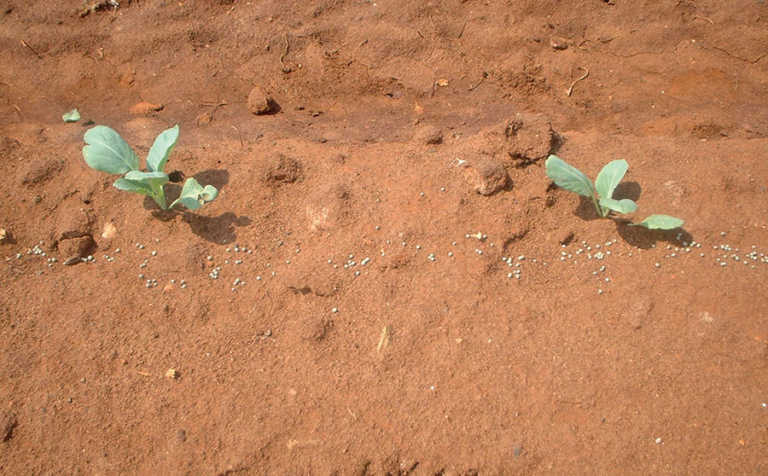
Photo: Bill Kerr
This makes planting quick and easy.
Machine planting will not save much on labour, but it will give you extremely accurate spacing and depth. Importantly, it prevents ‘J’ rooting, caused by bending the roots sideways when you plant the seedlings.
These plants become stunted. One drawback of machine planting is that, depending on your irrigation system, you may have to wait until you have finished planting before starting to irrigate. This can be a problem in hot, dry weather.
In this case, you should irrigate in advance so that the seedling is placed in moist soil. Another drawback of machine planting is that your tractor will be tied up for a long period with this task.
The benefits of hand planting
With hand planting, it’s important to supervise your workers carefully or you may end up with poor results.
On this account alone, many growers have switched to mechanical planting. But hand planting has two definite advantages: timing and speed.
You can begin in the late afternoon (the best time for planting), plant rapidly, and irrigate immediately afterwards, giving the plant as little stress as possible. You will have to decide which method suits you best.
Roots: moisture and speed
The plant should be moist at planting. The roots at the outer edge of the seedling plug are the most important, as they will start to grow into the soil at transplanting.
If the seedlings are fairly dry and the air or soil dry, the root hairs will in turn dry out, slowing down the plant’s ability to ‘take’ as quickly as possible.
This aspect is often neglected by farmers. You should always be acutely aware of the plants’ needs at this time. A few hours of care can make a huge difference in the uniformity and performance of the crop.
Irrigate lightly after planting and as often as required. The frequency will depend on the climatic conditions and the ability of the seedling to grow roots into the soil.
I’ve had 2cm of growth into the soil within 24 hours due to excellent seedlings and good conditions.
This early stage can take substantially longer if seedlings lack vigour or energy. As soon as the seedlings can draw moisture from the soil and are no longer dependent on moisture in the plug medium, reduce the irrigation.
Applying nitrogen
It is at this stage that you need to apply the first LAN dressing. The irrigation to get the crop established has leached nitrate into slightly deeper soil and this needs to be replenished as soon as possible.
As soon as the plant senses that the nitrogen level is low, its ‘survival’ mechanisms will start to kick in and it will slow its growth rate.
Farmers often think they have applied sufficient nitrogen to the soil and that if the plant needs nitrogen it will grow roots to absorb it.
But here’s the catch: without nitrogen, the plants cannot grow roots in the first place!
The plant thus begins a ‘survival’ growth pattern: it produces smaller leaves and grows into a compact, economical plant.
When the farmer notices this – along with the light colour of the leaves – he then applies nitrogen. But it’s now too late. Although the growth pattern may slowly change, the yield will be lower.
The only solution is to be proactive and anticipate this problem. Within a week of planting, apply LAN to ensure that the plants start to generate large lower leaves, which make a high yield possible.
This first application is the most important management practice of the life cycle and is the only way to be sure of producing consistently high yield.











